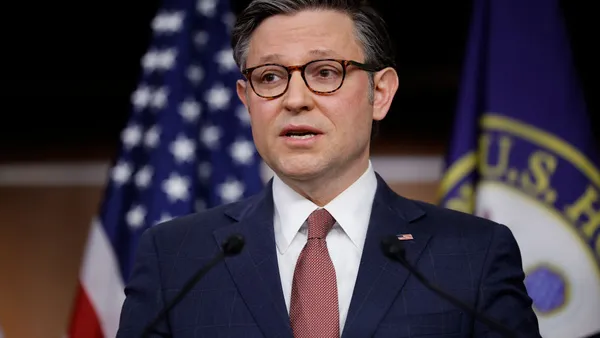Dive Brief:
- Paying public college presidents more does not necessarily lead to increased revenue from donors or state coffers, according to a new study published in The Review of Higher Education examining the relationship between executive pay at public institutions and state appropriations.
- The report used data on college executive salaries to find the relationship between higher pay and more state appropriations is "weak at best" and in some cases could be negative because lawmakers might be "turned off" by high presidential salaries. There were some indications it improved fundraising, but the authors didn't find correlation.
- The authors describe two sides of the debate about college executive salaries: on the one hand, that they might decrease state and donor support and are correlated with increased student debt and the use of part-time faculty; and, alternatively, that colleges must offer higher salaries to acquire the best talent.
Dive Insight:
The paper's discussion of presidential salaries was fueled by data from the Chronicle of Higher Education on presidential salaries. That data showed average pay for the 20 highest-paid public college leaders rose nearly 28% year-over-year for the 2016-17 academic year to $1.25 million. Among them, 12 leaders made $1 million or more in base pay and bonuses that year.
The use of executive search firms could be one factor inflating presidential pay, as those firms are often paid as a percentage of the final salaries, some research has shown. Other factors include tighter state funding, declining enrollment and other challenges on campus that have moved institutions to look for executives that are equipped to handle the range of financial, public relations and political challenges facing colleges today. Increasingly, those individuals hail from outside academia.
Other arguments around executive compensation in higher education suggest the data might be skewed by an increasing number of presidential departures that reduce confidence in an institution, thereby lowering support — or by new administrators who might enliven it.
Some states have limited college executives' salaries, a move that could throw off comparisons. Capping pay has become more common, notably in California where presidential pay raises and other sources of income for presidents are restricted. With his salary of $356,431, California State University, Fullerton President Fram Virjee was paid in the top tier of executives in that state system but below comparable universities nationwide. Some critics of the caps say they prohibit those institutions from competing for the best candidates.
This year, the University of Minnesota also became part of that discussion as state legislators mulled lowering the salary of the successor to retiring President Eric Kaler. Some officials thought such a move would show that all stakeholders were sharing in belt tightening, but some were also concerned that it would send the wrong message should the university select a women as president. As it turned out, the university last month hired Joan Gabel, its first female leader, for slightly more than what it paid Kaler.
At least three college president have given up pay raises over the last five years: Geoffrey Mearns, formerly at Northern Kentucky University; Michael Le Roy, at Calvin College in Michigan; and Raymond Burse, now a board member at the University of Louisville, who in 2014 took a pay cut of about $90,000 while president at Kentucky State University to give lower-level employees a raise.
Correction: A previous version of this article misstated Raymond Burse's affiliation with the University of Louisville. He is a member of the board of trustees.












